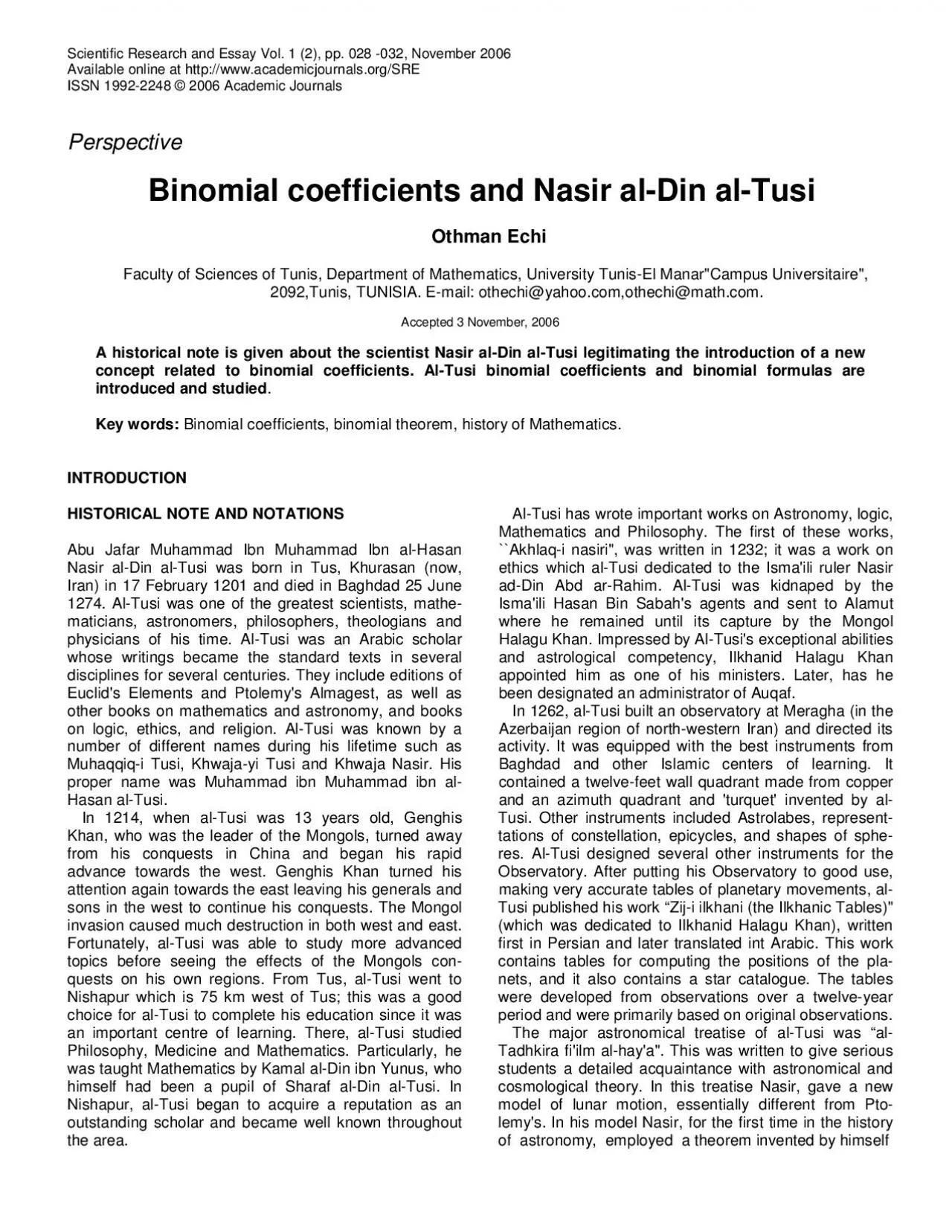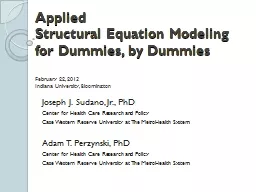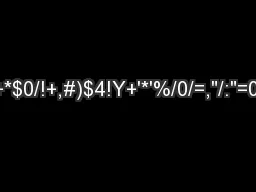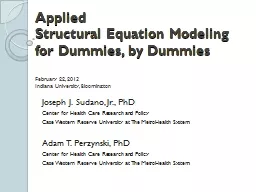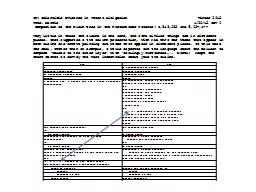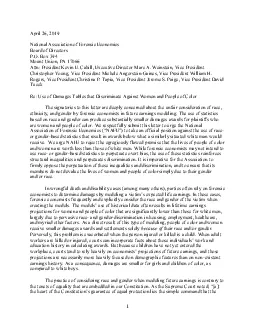PDF-Scientific Research and Essay Vol 1 2 pp 028 032 November 2006 Avail
Author : ximena | Published Date : 2021-08-15
hich 250 years later occurred again in Chapter IV of Book III of Copernicus De Revolutionibus On the revolutions of the heavenly spheres This theorem runs as follows
Presentation Embed Code
Download Presentation
Download Presentation The PPT/PDF document "Scientific Research and Essay Vol 1 2 pp..." is the property of its rightful owner. Permission is granted to download and print the materials on this website for personal, non-commercial use only, and to display it on your personal computer provided you do not modify the materials and that you retain all copyright notices contained in the materials. By downloading content from our website, you accept the terms of this agreement.
Scientific Research and Essay Vol 1 2 pp 028 032 November 2006 Avail: Transcript
Download Rules Of Document
"Scientific Research and Essay Vol 1 2 pp 028 032 November 2006 Avail"The content belongs to its owner. You may download and print it for personal use, without modification, and keep all copyright notices. By downloading, you agree to these terms.
Related Documents

